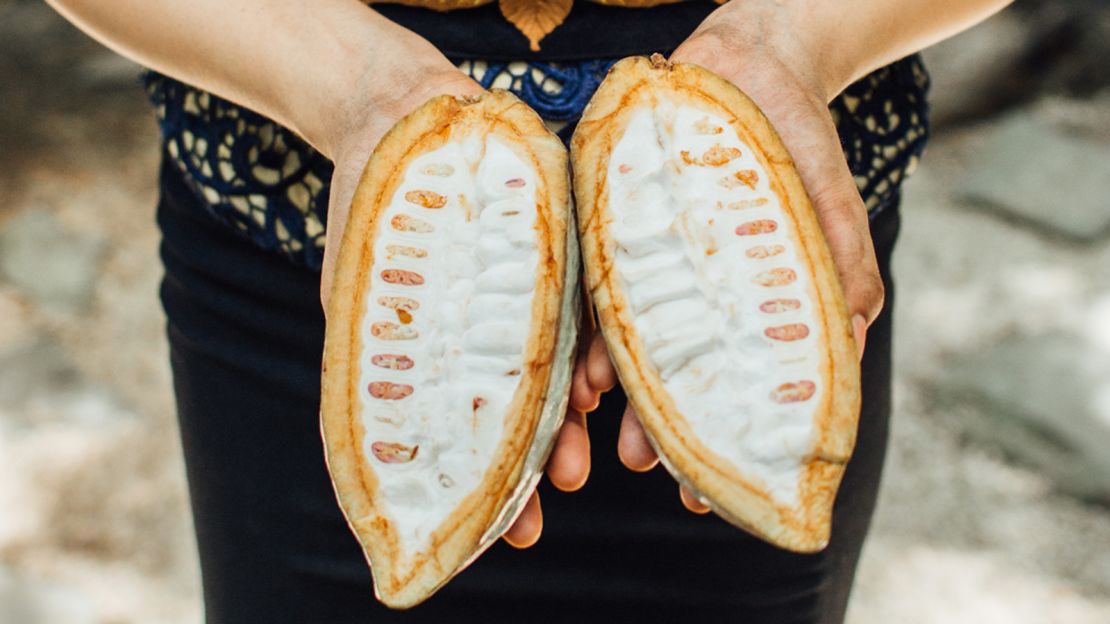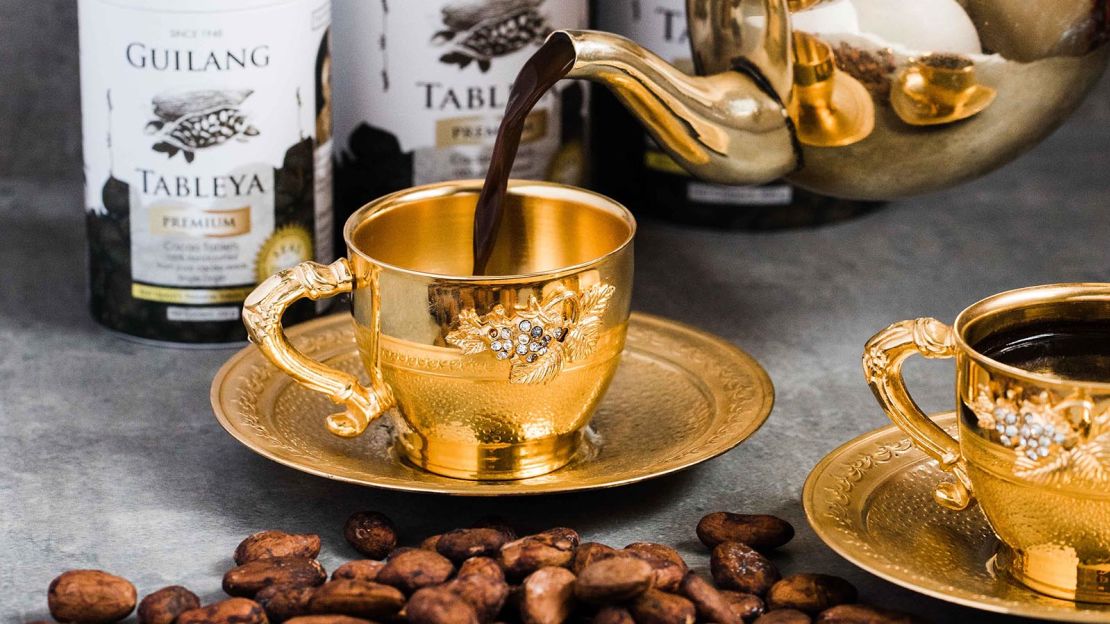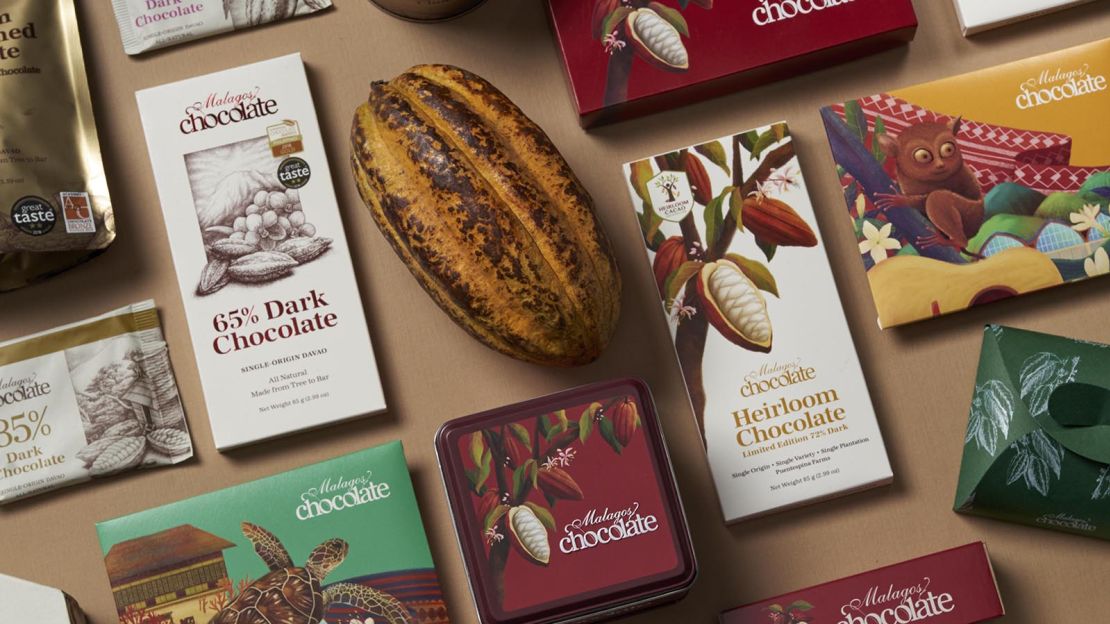On a 90-degree afternoon in humid Cebu, a merienda, or afternoon snack, might deliver a sweet surprise: an enormous mug of thick, velvety hot chocolate.
In Filipino cuisine, chocolate has a rich, delicious history that started with hot chocolate – also called sikwate or tsokolate de batirol, depending on the region – and has recently evolved into new culinary techniques and artisanal creations.
“Chocolate’s been popular for a long, long, long time in our cuisine and diet,” Louise Mabulo, founder of sustainable Philippines agricultural initiative The Cacao Project, tells CNN Travel.
“But, for the Filipinos, we’re really getting into the chocolate scene right now, because we have this sense of growing pride in our own local products.”
Cacao’s early origins
Cacao trees, the plant from which chocolate is derived, have been an essential crop in the Philippines since Spanish colonial rule, which lasted from 1565 to 1898.
Thanks to the galleon trade between Acapulco in Mexico and Manila in the Philippines, cacao seeds made their way across the Pacific Ocean for the first time.
As the story goes, the Spanish planted the first cacao tree in 1665, then Catholic friars introduced hot chocolate to the Philippines.
Nearly a century later, local Filipino farmers started cultivating cacao trees in their own backyards and the plant quickly propagated throughout the archipelago.
“We’ve had cacao growing, especially in my region in Camarines Sur (part of the Bicol Region, southeast of Manila) since the Spanish touched down and established the Acapulco trade,” says Mabulo, who is also a professional chef.
“We have really rich soil and our humidity is really high, so that’s ideal for growing cacao trees. It also grows really well in Batangas, Cebu and Davao – they have one of the top chocolate producers in the country.”
Backyard traditions

In many parts of the world, chocolate has been served as a status symbol – much like silks and spices – throughout history.
But, in the Philippines, a more democratic scenario emerged.
Many families planted cacao in private gardens, so they could harvest the bean-like seeds to make tablea – fermented, dried and roasted beans, which are then ground into a paste and molded into blocks – to use at home or sell at a local market.
“My grandmother had her own cacao trees in the backyard, and I grew up drinking her homemade hot chocolate,” recalls Mabulo.
“If you can try the chocolate beans raw, that is a great way to kind of understand why the flavor of our chocolate tastes that way and to see how it’s grown. That in itself is an experience – to see the beans drying in the sun, to smell them as you roast. It’s magical.”
Heirloom chocolate recipes
Like Mabulo’s grandmother, many home cooks developed their own heirloom chocolate recipes, serving it with rice, pastries or in the form of hot chocolate.
Though the style changes from region to region, one traditional way to make sikwate calls for chocolate tablea, sugar, cream and milk – all boiled in a pot, then whipped with a traditional whisk called a batirol (or a molinillo) to create a rich, frothy chocolate drink.
Other variants call for mixing the chocolate blocks into boiling water, which results in a lighter and foamier yet less decadent experience. Sometimes it’s consumed hot, other times chilled.
Depending on the region you’re in and the time of year, Filipino hot chocolate may also contain crushed nuts, cinnamon, vanilla, nutmeg or even peanut butter – every family recipe is a little bit different.
“In my region, we grow a lot of chilies, so we mix in chilies and coconut milk,” adds Mabulo.
“One of the reasons why each region’s hot chocolates taste slightly different is because of the nuanced flavor notes and the terroir of the chocolate. Although they appear very similar, some are earthier, some are fruitier, some have a more coffee-like aroma.”
Filipino hot chocolate can be enjoyed solo or with some tasty accompaniments, such as churros, traditional pan de sal (salt breads), rice cakes and fried donuts.
“You also eat it with a bibingka – a ‘goodness’ rice flour cake with shredded coconut, cheese and butter and eggs. That’s one of my favorite combinations,” says Mabulo.
And at Christmas, she says, her family enjoys purple rice cakes called puto bumbong, alongside hot chocolate and ensaymada (a fluffy, brioche-like cheese bread).
Chocolate paradise

Though many regions produce exceptional cacao, Boboi Costas, a sustainable tourism expert who grew up in Cebu, says his hometown is one of the best places to try sikwate.
“Our recipe in the Visayas (region) is usually one-to-one – meaning one cup of boiling water and one chocolate tablet,” Costas tells CNN Travel.
“That combination really maintains a thick, smooth, chocolatey consistency. We usually pair it with sticky rice, steamed with coconut milk and some fresh, sliced mangoes.”
He says you can find sikwate on nearly every corner in Cebu, from no-frills street vendors serving up steaming mugs in the morning to high-end cafes or hotels.
“If you would prefer to sip sikwate in the comforts of an air-conditioned chocolate shop, I would recommend Chocolate Chamber, which has two locations,” says Costas.
“But if you like a more utilitarian experience and want to sit with the hoi polloi, you can drink sikwate from any street food vendors at the public markets in Cebu.”
Other not-to-miss Cebu chocolate experiences include Argao Guilang’s Tableya, a family business that offers an interactive tour of their chocolate kitchen.
Then there’s the decadent chocolate afternoon tea at the Shangri-La Mactan Resort and Spa, which operates its own cacao garden and chocolate-making facilities.
“I would say if you really like to try sikwate or batirol, definitely ask the locals,” adds Mabulo.
“We know the good places to get it or know some grandma who makes her own chocolate and it’s fantastic.”
Delicious adventures

Hot chocolate isn’t the only way to consume this delicious ingredient in the Philippines.
“We often turn tablea into chocolate sauces or eat chocolate with sticky rice,” says Mabulo.
Both Mabulo and Costas recommend trying a bowl of champorado – a type of chocolate porridge with fried fish – which is typically prepared with tablea and eaten for breakfast or as a mid-afternoon merienda.
“Champorado is an acquired taste, but it is true Filipino comfort food. No matter where Filipinos are in the world, we hanker for this porridge,” says Costas.
“The food, the scent, the taste – it takes us back to the Philippines.”
Over the past few years, chocolate makers and chefs alike have gotten more creative with the ingredient.
Some chefs use tablea to add depth to beef stews or pickle fish, while others incorporate cacao pods to beautify a dessert plate.
Several bean-to-bar brands – such as Theo & Philo, Malagos Chocolates, Chocoliz, Trinitario and Auro Chocolate – have also emerged, turning a spotlight on high-quality, minimally processed chocolate.
“Here in the Philippines, chocolate is a lot like wine. What we produce is quite pure, so you get to try the raw product itself and you get to undertones of berries and coffee,” says Mabulo.
“It’s slightly more bitter, a little sour, and a lot fruitier – it’s definitely a different quality of chocolate.”










